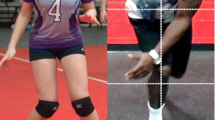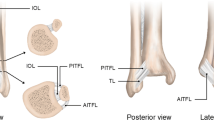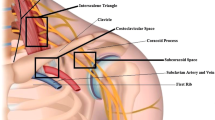Abstract
Whiplash injuries are very common and usually are associated with rear-end collisions. However, a whiplash injury can be caused by any event that results in hyperextension and flexion of the cervical spine. These injuries are of serious concern to all consumers due to escalating cost of diagnosis, treatment, insurance, and litigation. Most acute whiplash injury cases respond well to conservative treatments, which result in resolution of symptoms usually within weeks to a few months after the injury occurred. Chronic whiplash injuries often are harder to diagnose and treat and often result in poor outcomes. Current research shows that various structures in the cervical spine receive nociceptive innervation and potentially may be the cause of chronic pain symptoms. One potential pain generator showing promise is the facet or zygapophyseal joints. Various researchers have proven that these joints are injured during whiplash injuries and that diagnosis and temporary pain relief can be obtained with facet joint injections. The initial evaluation of any patient should follow an organized and stepwise approach, and more serious causes of neck pain must first be ruled out through the history, physical examination, and diagnostic testing. Treatment regimens should be evidence-based, focusing on treatments that have proven to be effective in treating acute and chronic whiplash injuries.
Similar content being viewed by others
References and Recommended Reading
Crowe HE: Injuries to the cervical spine. Paper presented at the Meeting of the Western Orthopedic Association. San Francisco: 1928.
Evans RW: Whiplash around the world. Headache 1995, 35:262–263.
Malanga GA, Nadler SF: Whiplash injury: a continuing dilemma in the 21st century. In Whiplash. Edited by Malanga GA, Nadler SF. Philadelphia: Hanley and Belfus; 2002:1–4.
Paul RP: Chronic neck pain syndromes. Compr Ther 1999, 25:278–282.
National Highway Traffic Safety Administration: Traffic Safety Facts 1994: A Compilation of Motor Vehicle Crash Data from the Fatal Accident Reporting System and the General Estimates System. Washington DC: National highway Traffic Safety Administration; 1995.
Young WF: The enigma of whiplash injury: current management strategies and controversies. Postgrad Med 2001, 109:179–180.
Spitzer WO, Skovron ML, Salmi LR, et al.: Scientific monograph of the Quebec Task Force on Whiplash-associated Disorders: redefining “whiplash” and its management. Spine 1995, 20(suppl):1S-73S.
Gore DR, Sepic SB, Gardner GM: Roentgenographic findings of the cervical spine in asymptomatic people. Spine 1986, 11:521–524.
Boden SD, McCowin PR, Davis DO, et al.: Abnormal magnetic resonance scans of the cervical spine in asymptomatic subjects: a prospective investigation. J Bone Joint Surg Am 1990, 72:1178–1184.
Bogduk N, Yoganadan N: Biomechanics of the cervical spine. Part 3: minor injuries. Clin Biomech 2001, 16:267–275.
Pearson AM, Ivancic PC, Ito S, Panjabi M: Facet joint kinematics and injury mechanisms during simulated whiplash. Spine 2004, 29:390–397. Provides an excellent discussion of injury mechanisms.
Teasel RW, Shapiro AP: Whiplash injury: a continuing dilemma in the 21st century. In Whiplash. Edited by Malanga GA, Nadler SF. Philadelphia: Hanley and Belfus; 2002:105–124.
Lieberman JS: Cervical soft tissue injuries and cervical disc disease. In Principles of Physical Medicine and Rehabilitation in Musculoskeletal Diseases. New York: Grune & Stratton; 1986:263–286.
DeLeo JA, Winkelstein BA: Physiology of chronic spinal pain syndromes: from animal models to biomechanics. Spine 2002, 27:2526–2537.
Bennett GJ: Update on the neurophysiology of pain transmission and modulation: focus on the NMDA-receptor. J Pain Symptom Manage 2000, 19:S2-S6.
Hartling L, Pickett W, Brison RJ: Derivation of a clinical decision rule for whiplash-associated disorders among individuals involved in rear-end collisions. Accid Anal Prev 2002, 34:531–539.
Rodriquez A, Barr KP, Burns SP: Whiplash: pathophysiology, diagnosis, treatment, and prognosis. Muscle Nerve 2004, 29:768–781.
Malanga G: Principles and Practice of Neck Pain Rehabilitation. SpineLine 2003, 7–12. Offers excellent background of rehabilitation.
Author information
Authors and Affiliations
Rights and permissions
About this article
Cite this article
Malanga, G., Peter, J. Whiplash injuries. Current Science Inc 9, 322–325 (2005). https://doi.org/10.1007/s11916-005-0007-6
Issue Date:
DOI: https://doi.org/10.1007/s11916-005-0007-6




